
by: SEO Strategist
Ashot Nanayan
Ashot Nanayan is the CEO and Founder of DWI and a seasoned SEO strategist. With a proven track record of...
All Articles by Ashot Nanayan
Updated August 9, 2025
14 min read
If you’re an eCommerce business owner tired of watching competitors dominate Google while you’re stuck on page two (or worse), let me tell you, you’re in the right place. I’m the CEO and founder of Digital World Institute (DWI). For over six years, I’ve been deep in the SEO trenches, helping eCommerce brands like yours secure powerful backlinks from niche-relevant websites and big-name media outlets.
I’ve seen too many link-building guides out there that scratch the surface but never dive into the real stuff. The truth is that link-building for eCommerce isn’t just about blindly guest posts or buying spammy links. It’s a strategic art (and a little science), it’s your ticket to dominating search results and, more importantly, your market.
In this post, I’m sharing real examples, actionable tips, and link-building case studies from my firsthand experience. We’re diving into the critical behind-the-scenes details; stuff most “SEO experts” conveniently skip. By the end, you’ll have a blueprint to take your eCommerce store to the next level and claim that coveted #1 spot on Google.
So, ready to uncover the secrets that actually work? Keep reading, I promise, you’re going to want to bookmark this one.
I’ve worked with many Shopify startups and enterprise-level eCommerce giants, and the challenges are almost the same everywhere because of the nature of transactional content; just dressed differently depending on the scale.
The number one headache is that nobody wants to link to a product page. Seriously, unless you’re selling something completely unique or outrageously viral, good luck getting organic backlinks to your “Buy Now” button. Most bloggers or publishers see product pages as purely promotional, so unless you’re solving a very specific problem or offering something crazy helpful, they’ll skip right over it.

Things get even more complicated for enterprise-level eCommerce brands. You have huge catalogs, approval processes for every piece of content, and teams that want everything cleaned to death before it ever sees the light of day. That slows things down. When you’re trying to build links during a seasonal push or before a new launch, that kind of delay can make you miss the boat entirely.
Another issue I see all the time is category pages with nothing on them. Just a list of products and maybe a short intro, if you’re lucky. Google doesn’t care about that, and neither do potential linkers. If there’s no real content, there’s no value to point to
There’s a huge difference between running the game with an established eCommerce brand and hustling to get noticed as a new store. If you’re launching a new eCommerce site, chances are no one’s linking to you just yet. No brand mentions, no loyal customer base, no history.
You know, the pressure to “get links fast” is everywhere, and that’s where website owners make the biggest mistake; they buy a few backlinks, thinking it’ll speed up indexing or authority.
But Google’s smarter than ever. If your site popped up yesterday and suddenly has 20 dofollow links from unrelated blogs or spammy directories, that’s a huge red flag.
What I always suggest to new store owners is this: slow down and earn your first 10–20 links the right way. Start with partnerships, suppliers, niche directories, PR link-building campaigns, or even interviews with micro-influencers. These kinds of links feel real to Google because they are real.
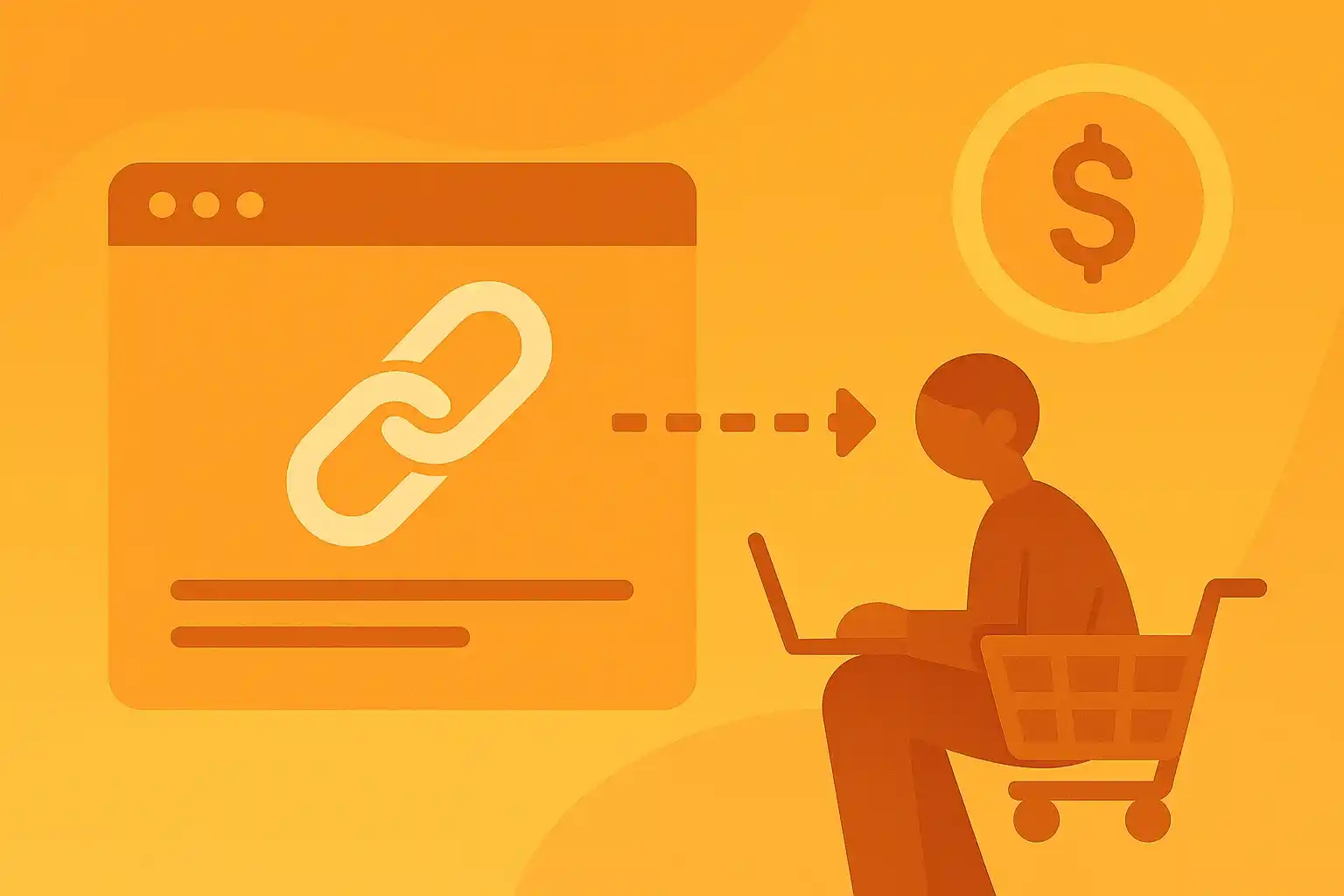
Now, for established stores, there are other challenges. You might already have a decent link profile, maybe even some high-authority domains in there. But now it’s about staying relevant and avoiding patterns. Google loves diversity, so if every link points to your homepage or one best-seller, you’re going to have a problem.
Instead, I recommend looking at which product categories get no love. Push deeper links, not just higher ones. Get people linking to your blog, your product guides, your comparison pages; content that naturally attracts citations.
Here’s a killer tip I often give my long-term clients: once your brand is even a little known in your niche, monitor unlinked mentions aggressively, which is especially works for enterprise link-building. Tons of blogs might already be talking about you without linking. A simple outreach email can turn that into a goldmine of backlinks without even creating anything new.
Imagine your eCommerce website is a house. Before you invite guests (backlinks) to admire it, you need to make sure the house isn’t falling apart. Nobody’s impressed by a leaky roof or crooked walls, no matter how cool the invitation was. In the same way, even the best backlinks won’t save your rankings if your on-page SEO is a mess.

Start with the basics: Are your product pages optimized with proper titles and meta descriptions? Are your URLs clean and descriptive, or do they look like random license plates? Is your site structure clear and logical, guiding users and search engines from category to product? Do your money pages (collection and product pages) target the right keywords with the right intent? These elements aren’t just good manners; they’re the foundation of search engine visibility.
Make sure your eCommerce website’s internal linking is fully optimized as, it plays an essential role in distributing the link equity, or “link juice,” coming from your backlinks. Without proper internal linking, the value from your backlinks may not effectively flow across your site
Yes, It’s a simple yet powerful way to maximize the impact of your link-building efforts.
Without solid on-page SEO, earning high-quality links is like pouring water into a bucket with a hole. Sure, you’ll get some results initially, but all that effort will eventually drain away.
So, tighten up your internal house first.
Make sure every link you earn adds value and helps your site climb the SERPs instead of spinning its wheels. Investing in on-page SEO is the ultimate “measure twice, cut once” approach. Get it right, and every backlink you earn will work harder for you.
It’s also alarmingly common for eCommerce site owners to overlook noindex directives, canonical tags, and the robots.txt file. Without these in place, search engines might see your product pages as a sprawling army of clones. That’s not going to win you any SEO awards, even if you build dozens of backlinks.
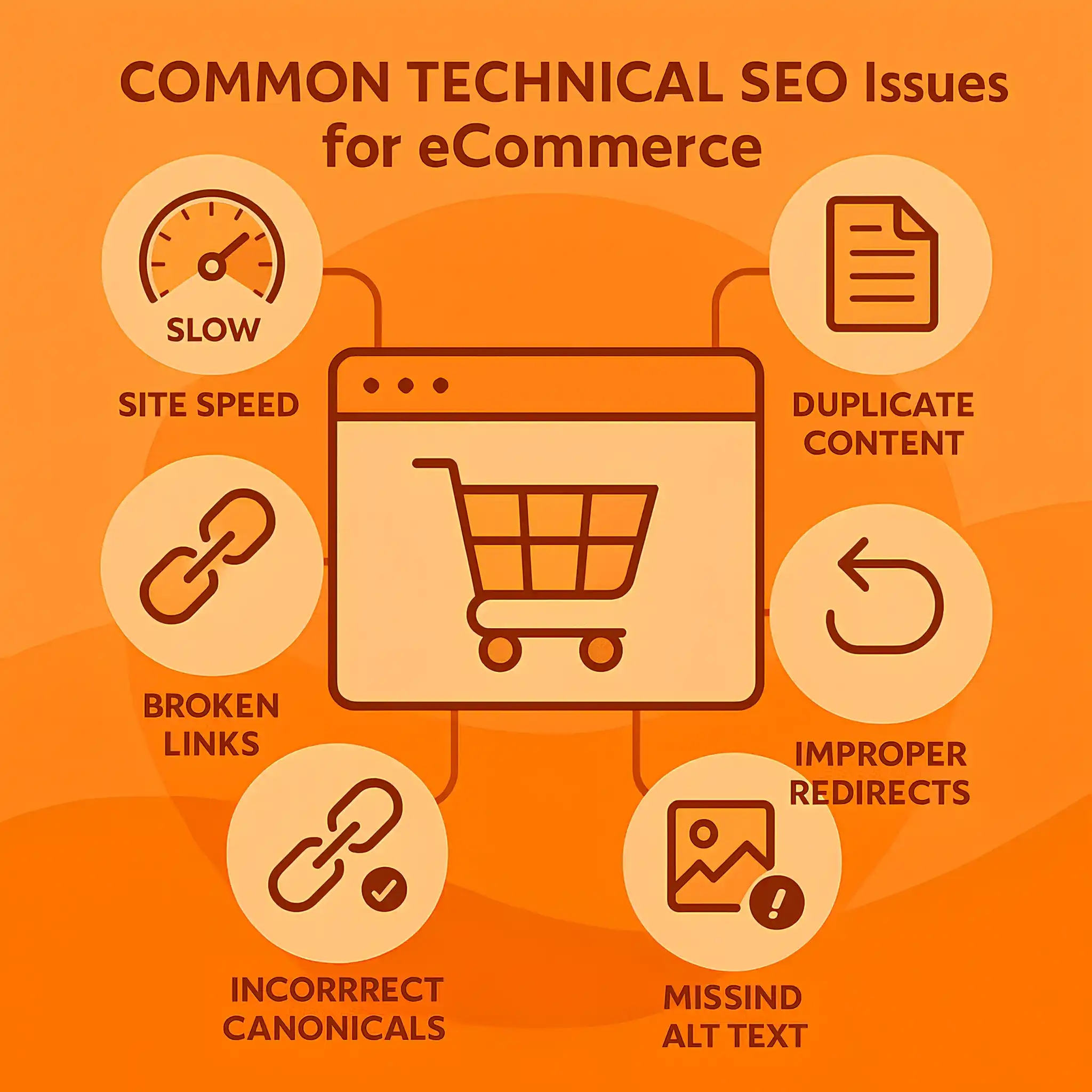
Take canonical tags, for example. If you’ve got ten versions of the same product page for color, size, or flavor, and no canonical tag to tell Google which one’s the real MVP, your rankings could end up as confused as a cat in a laser pointer store. Similarly, failing to use noindex tags on irrelevant pages, like filters or out-of-stock items can clutter up your crawl budget and hurt performance.
Bottom line? Before you get backlinks, make sure your on-page and technical SEO are optimized.
If you’re serious about eCommerce link-building, it’s time to channel your inner creative genius. Crafting link-worthy assets is the secret sauce to attracting backlinks organically and keeping your link-building efforts feeling as natural as a conversation over coffee. Without these assets, you’ll find yourself in a never-ending loop of link-building outreach emails, awkward pitches, and “please link to us” requests that feel about as fun as folding fitted sheets.
Instead, let your content do the talking, and the linking. Think of it this way: give people something they want to link to. Here are a few examples of link-worthy assets that work like a charm:
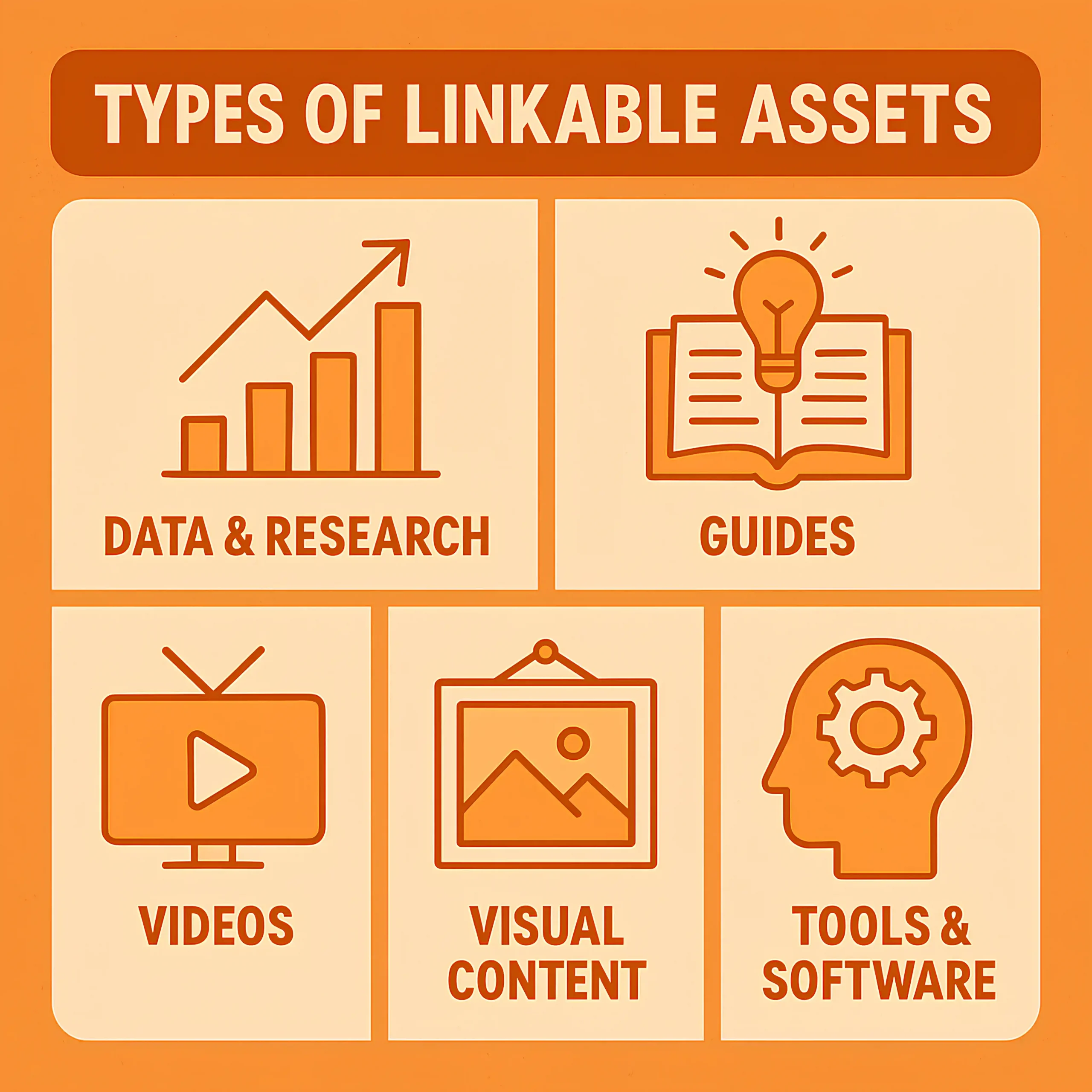
Take REI, for instance. Their outdoor buyer’s guides are legendary. If you’re searching for “how to choose a camping tent,” chances are you’ll stumble upon their expertly crafted guide.
Why does it work? It’s packed with actionable advice, beautiful visuals, and insider tips. Not only do customers appreciate it, but countless websites link to it as a trusted resource. That’s the kind of magic we’re talking about.
Remember, creating link-worthy assets isn’t just about attracting links, it’s about building credibility, engaging your audience, and becoming a go-to authority in your niche. Plus, wouldn’t it be nice to let your content bring in the backlinks while you sip that well-earned latte?
So, you’ve nailed the technical and on-page SEO for your eCommerce site – congrats! Your product pages are shining, your category pages are streamlined, and your site loads faster than my coffee machine on a Monday morning.
Now, it’s the best time to create a custom link-building strategy for your eCommerce store.
Over the years, I’ve seen countless eCommerce businesses struggle to crack the code on backlinks, so I’m here to share top tips, techniques, and strategies that have delivered results for companies big and small.
As for the first step, take a moment to size up the competition; it’s like peeking into your neighbor’s shopping cart at the store, except way more strategic and less nosy.
Start by conducting an in-depth analysis of your competitors’ backlink profiles. Which pages are the magnets for backlinks? Are they earning links to blog posts, product pages, or that one random guide they forgot they even wrote? Pay close attention to their anchor texts; are they target exact match keywords, branded terms, or creative calls to action?
Let’s not forget the techniques they’re using to score those links. Are they relying on guest posts, partnerships, HARO link-building, or are they earning organic mentions through captivating content?
Gain valuable insights into what works in your niche and create your own version that’s even better.
Imagine your website is a Gardena; planting the right seeds in the right spots guarantees the best growth. Similarly, targeting the right pages ensures your link-building campaigns yield the most results without raising red flags with search engines.
If this is your first link-building campaign, start by targeting your homepage with branded anchor texts as it’s the safest bet. The homepage is like the foundation of your website’s authority, and links to it naturally spread “link juice” across all your other pages through internal links. It’s like watering the roots of a tree; everything benefits and it doesn’t scream “I’m trying to rank my money pages!”
Next, decide between category (collection) pages and product pages. Based on my firsthand experience, it’s much more effective to target category pages. Consider a collection page as a hub, it’s home to a variety of products, and boosting its authority indirectly benefits all the products under it.
For instance, linking to a “Men’s Running Shoes” category page helps every shoe in that category get a slice of the SEO pie, as opposed to linking to just one pair of sneakers.
On the other hand, avoid linking to too many of your money pages (like specific product pages) directly. It’s risky because it sends a clear message to search engines:
However, If you’re running a store with just 5-10 products, congratulations, you’ve got the easy side of this equation. Picking the right target pages becomes a streamlined process where you can focus on the heavy-hitters: the products with the highest profit margins, the best performance, or the most strategic importance. It’s like putting your best players on the field; they’ll carry the game.

Next, don’t forget about your blog. Even if your blog isn’t where your conversions live, linking to it makes your backlink profile look more natural, and search engines love a little variety.
So, whether it’s your best-sellers, your underdogs, or your brilliant blog posts, make every link count.
Mix it up: Use branded, generic, and natural anchor texts to keep your profile diverse and safe. Focus on quality over quantity; 10 strong links can do more than 100 low-quality ones. Once you’ve boosted your homepage or category page authority, use smart internal linking to guide the juice where it’s most needed.
Remember, link-building is about building trust, authority, and long-term growth. Play it safe, play it smart, and never make simple mistakes.
Link-building is the most resource-consuming part of an SEO budget. If you want real results, you need to allocate a proper budget. So, how much should you plan for? eCommerce link-building costs can vary widely depending on your industry and objectives, a single high-quality link can cost anywhere from $100 to $600+, depending on factors like domain authority, Ahrefs DR, traffic, and the niche relevance of the site. Let’s not forget premium placements, like high-authority media outlets or blogs, which can climb upwards of $1,000 to $2,500 per link.
One thing I always recommend: set aside a little “opportunity fund.” Every now and then, you’ll get a golden chance to secure a powerful backlink: maybe a partnership, a feature on a niche podcast, or a quick PR story. If your budget’s already used up, you’ll have to pass, and that sucks.
The good news? I’ve written a detailed guide on link-building costs to help you navigate these murky waters. It breaks down everything you need to know about pricing, so you can plan smarter and avoid overpaying for mediocre results.
In short, budget wisely, invest in quality over quantity, and always keep an eye on your ROI. Because in link-building is about spending smart.
There are a lot of link-building techniques out there, but not all of them will sit well with your eCommerce business. Each technique has its own pros and cons, and picking the wrong one can leave you with wasted resources and zero results.
That’s why, I’m not here to hand you a one-size-fits-all strategy that sounds good on paper but doesn’t deliver. Instead, I focus on tried-and-tested techniques that have already worked wonders for other eCommerce stores.
Now, instead of overwhelming you with every link-building method under the sun, I’ll spotlight the ones that pack a punch for eCommerce websites.
Below, I’ll list out the top link-building techniques for eCommerce businesses. And yes, each one deserves its own guide (because I like keeping things thorough and useful). Let’s get started!
Guest posting remains one of the most effective link-building techniques for eCommerce websites.
You can contribute high-quality articles to relevant blogs and secure backlinks to your site.
If you want to learn more, read my guide on [Guest Posting for SEO].
Link insertion involves adding your website’s link to existing, high-quality content on relevant websites. This technique helps you build contextual links that pass significant SEO value.
If you want to learn more, read my guide on [Link Insertion Techniques].
Digital PR campaigns are an excellent way to earn high-authority backlinks. You can create newsworthy stories, data-driven content, or unique resources and earn PR backlinks from major publications and blogs.
If you want to learn more, read my guide on [How to Earn PR Links].
Help a Reporter Out (HARO) connects you with journalists looking for expert input. You provide valuable insights or information and earn backlinks from credible media outlets, enhancing your eCommerce website’s authority and driving referral traffic.
If you want to learn more, read my guide on [HARO Link Building].
Backlink exchanges involve collaborating with other website owners to exchange relevant and high-quality backlinks.
If you want to learn more, read my guide on [Backlink Exchanges for SEO].
On the other hand, if you’re running a local eCommerce store, stop thinking like a national brand. You don’t need backlinks from Forbes to grow. What you need are people in your area talking about you online. Local bloggers, community websites, neighborhood Facebook admins, even that guy running the town newsletter on Substack.
Sometimes, you can also sponsor a small event, donate a product for a raffle, or just show up. Don’t ignore your Google Business Profile or local citations.
But don’t stop there! If there’s a local news site or blog talking about businesses in your area, pitch them a story. Got a unique product? An origin story? A sale that’ll knock socks off (literally, if you sell socks)? These are your angles to score a local backlink. Local news sites often have a loyal audience, and a feature can not only boost your backlink profile but also bring in direct traffic.
The key is to keep it authentic; be the business that your local community roots for, and the backlinks will follow. After all, who wouldn’t want to support their local legend? Just don’t forget to execute some solid SEO techniques in the mix while you’re at it.
Link-building isn’t a “set it and forget it” game. It’s more like tending to a garden; some strategies bloom beautifully, while others might just attract weeds. Over time, you need to step back, review what’s working, and adjust your approach based on the results.
For instance, let’s say you’ve been focusing on guest posting and niche edits. After six months, you notice that niche edits are bringing in the most high-quality traffic and ranking boosts, while guest posts are taking more time and yielding less impact. That’s your cue to shift your focus, double down on what’s effective and trim the fat. No need to keep watering the plants that refuse to grow.
Another example: Imagine one of your top-performing eCommerce pages suddenly drops a spot or two in search rankings. You dig in and notice competitors have gained backlinks from industry blogs or influencers. Instead of sulking about it (or rage-Googling “why is SEO so unfair?”), you adapt. Maybe it’s time to prioritize building partnerships with those same types of sites or even exploring HARO opportunities to gain authoritative mentions.
The key takeaway? Link-building strategies should evolve just like the eCommerce landscape. Periodically assess which techniques are efficient to get the best ROI. Keep an eye on your top-performing pages to make sure they stay competitive and don’t be afraid to experiment with new tactics. Remember, even the most successful strategies need a refresh to stay ahead of the game. SEO waits for no one; well, except maybe your competitors who forgot to adapt.
Alright, Over the years, I’ve tested, adjusted, and, yes, failed a few times to figure out what truly works for eCommerce. The tips I’m about to share are born from hands-on experience (and maybe a few sleepless nights), customized specifically for eCommerce businesses. Whether you’re running a boutique Shopify store or managing a Magento empire, these tips can help you build links that actually matter.
So, grab a coffee (or a stress ball if you’re mid-peak season), and let’s dive into the good stuff.
If you can show trends before your competitors even notice them, you win backlinks. I mean actual original data: your top-selling products per region, seasonal patterns, average order value trends, or even user behavior on mobile vs. desktop.
I’d also recommend publishing behind-the-scenes content for DTC brands. I’m talking about how the product is made, how the packaging is designed, or where the ingredients are sourced. It gives lifestyle blogs, ethical sourcing publications, and eco-conscious influencers a reason to reference you.

Also, don’t overlook shoppable guides; they’re a smart way to earn backlinks without coming off too salesy. Create helpful content like “Best Winter Accessories for 2025” or “What to Pack for a Solo Trip to Iceland,” and naturally include your products in the story. Make it feel like a magazine article, not just a product page.
Add expert tips, quotes from influencers, or real customer advice to make it genuinely useful. People are more likely to share or link to it if it’s actually helpful.
Want a smart, scalable link-building strategy for your eCommerce site? Here’s a tip that combines the best of SEO and internal linking: create listings blog posts. Think along the lines of “10 Best Gifts for Coffee Lovers” or “Top Running Shoes for Marathon Training.” These posts are like mini content hubs packed with value for your readers and backlinks for your product pages.
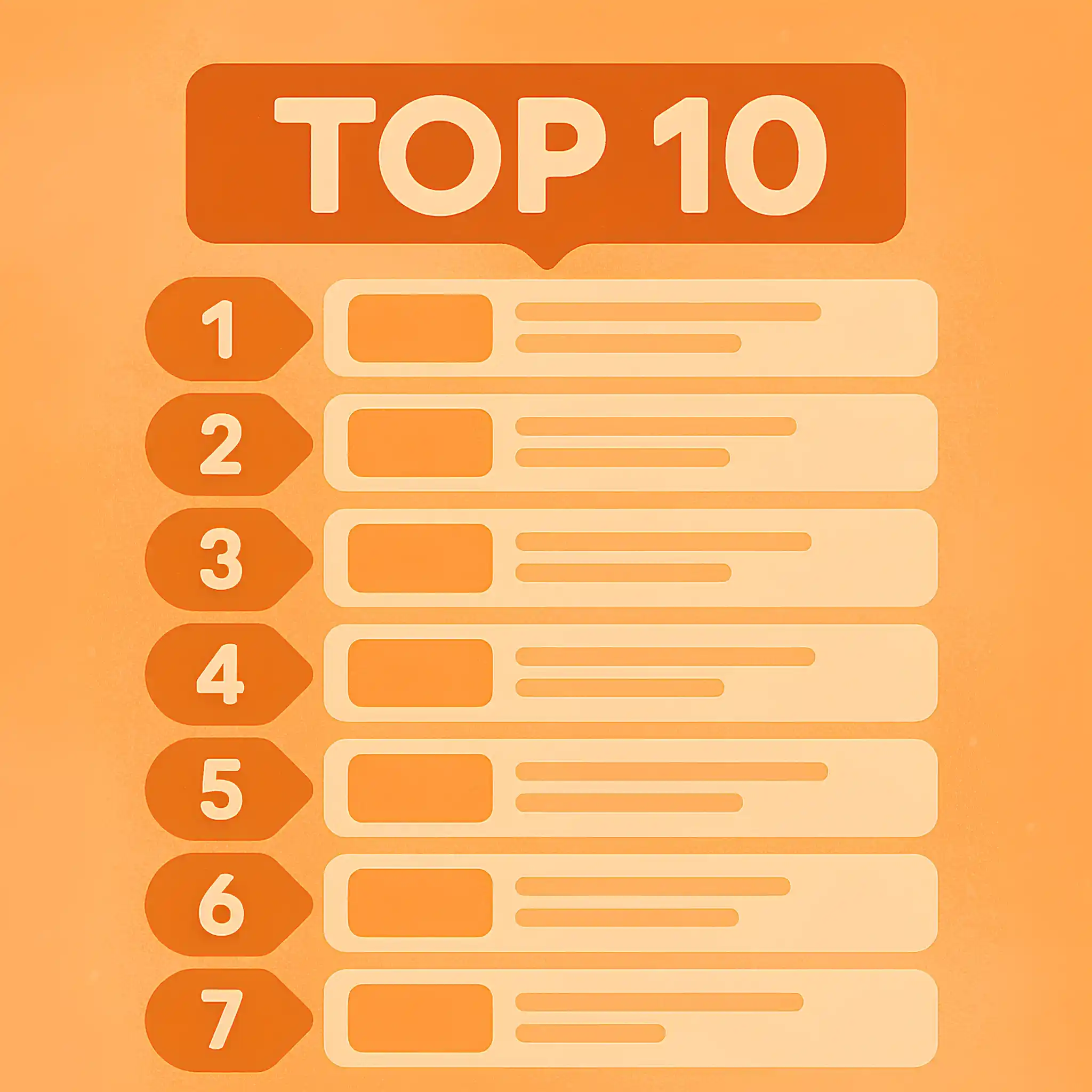
Here’s how it works: in your blog post, link directly to your collection or product pages, adding them in naturally. Now you’ve built a path where internal link juice flows from the blog to your money pages. But don’t stop there; this hub page deserves its moment in the spotlight.
Promote it like it’s your star product. Outreach to relevant bloggers, share it on social media, and maybe even feature it in your email campaigns.
Why does this work? When you promote the hub page and build backlinks to it, the link juice passes through your internal links to the collection and product pages. It’s like giving your entire catalog a little SEO love through one well-crafted blog post.
These blog posts can also drive traffic directly to your products. Because let’s cut to the chase; who doesn’t want to read about the “Top 5 Must-Have Gadgets of 2025” and click through to buy one?
So, get creative with your listings blog posts. Not only are they a fantastic way to spread link equity, but they’re also a great way to give your audience, and your sales a boost.
Ever bought something you love so much that you rave about it to anyone who’ll listen? Well, here’s a chance to turn that enthusiasm into a backlink for your eCommerce store. Writing testimonials for products or services you use is a smart link-building tactic.

Start with a product you use (and like). Authenticity is key. Nobody trusts a testimonial that is like “I copy-pasted this from their homepage.”
Highlight specific benefits, how it solved your problem, and why you recommend it. Make it personal but concise. Think: “This tool made managing my inventory a breeze” over “I like it. It’s good.”
Then, send your testimonial directly to the company. Many brands love adding testimonials to their website’s “Reviews” or “Case Studies” section.
Finally, politely ask if they could include a link to your eCommerce website or store alongside your testimonial. Something as simple as, “Feel free to add a link to my site, it’d be an honor!” works wonders.
Think of writing testimonials as a win-win barter; you give them a shiny badge of approval, and they (hopefully) give you a good backlink in return. Just don’t overdo it, nobody wants to be the “testimonial spammer” of the internet. Keep it real, clear, and watch the links roll in!
If you run an eCommerce store and you’re not publishing data-driven content, you’re sleeping on one of the most powerful ways to earn organic backlinks. Start with your own data. Look into your store’s backend. What are your best-selling products by season? What are the average cart values per country? Which categories increase during holidays?
Next, combine your insights with third-party research. If you sell pet products, you can create a report like “2025 Dog Toy Trends Backed by 10,000 Orders + Google Trends.”

If you make it visually appealing, like adding infographics, trend graphs, product growth heatmaps, it becomes even more linkable.
You can also run small surveys or polls. Ask your email list or social media followers questions like “What product feature matters most to you?” or “How much are you planning to spend this Black Friday?” Even 200 responses are enough to say “We surveyed 200 customers,” and that’s more than enough for content that earns attention.
People trust brands that back up claims with data. It’s like being the cool kid who knows the answers in class. Journalists, bloggers, and businesses love linking to credible research. Data-driven content often gets shared, bookmarked, and referenced bringing visitors who might not have found you otherwise.
Good research takes time, and you might need tools or expertise to gather and analyze data. Old data is like expired milk; no one wants it. Make sure to update or replace outdated research.
Let’s say you run an online home decor store. You conduct a survey about “Top 10 Interior Design Trends for 2025,” showcasing customer preferences for minimalism vs. maximalism. You create an infographic breaking down trends by region and release the post. Result? Interior design blogs and magazines link to your content, boosting your SEO while you sip your coffee like a marketing genius.
Yes, it takes effort, but the rewards in backlinks, authority, and traffic are well worth it. Plus, there’s nothing quite like seeing your work cited by others to make you feel like an SEO rockstar!
Podcasts might not be the first thing that comes to mind when you think about eCommerce link building, but they’re an underrated goldmine for earning valuable links. Podcasts thrive on content collaboration, unique perspectives, and niche expertise; perfect ingredients for link-building success.
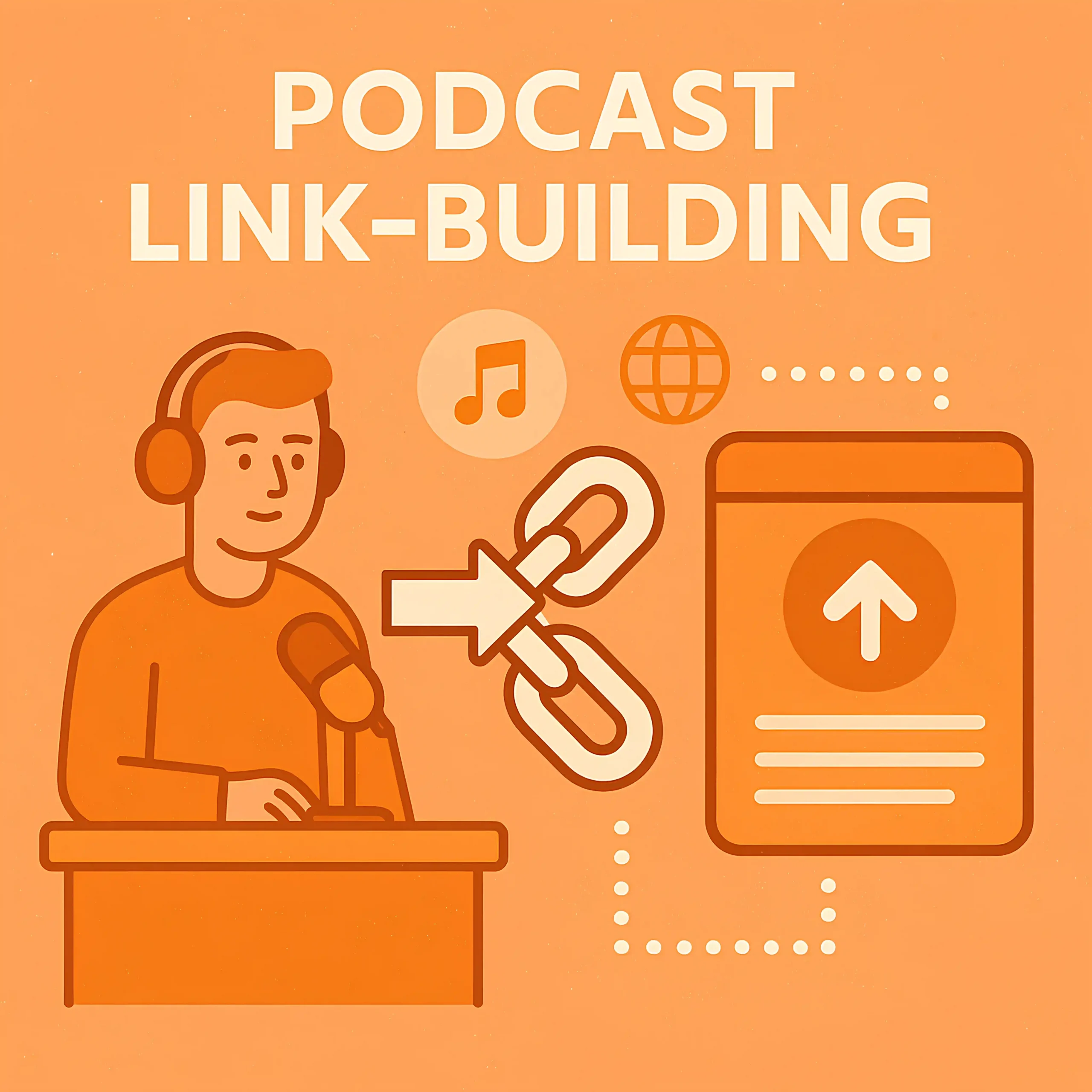
Imagine you sell eco-friendly kitchenware. You get featured on a sustainability-focused podcast, sharing tips on reducing plastic waste. The host loves your insights, and the episode notes include links to your blog and product pages.
The result is a steady flow of organic traffic, a boost in domain authority, and even some direct sales; all from a single podcast appearance.

Podcast link building is like the Swiss Army knife of eCommerce SEO; it takes a bit of effort but delivers versatile and lasting results. Whether you’re guest-starring on a popular show or building your own, the links you earn are not just backlinks; they’re trust signals, traffic drivers, and brand boosters.
When you’re running an eCommerce store with hundreds or thousands of SKUs, traditional link-building approaches quickly hit a wall. You can’t afford to build one link at a time. You need systems and scalable frameworks.
The first thing I always emphasize when advising eCommerce clients is this: you’re not building links for individual products, you’re building an infrastructure of trust across your entire domain. That means designing pages that deserve links at scale, while setting up systems that distribute authority strategically.

One of the most underused tactics I’ve seen is developing link-worthy hub pages based on product categories or intent-driven topics. If you’ve got 1,000+ SKUs, don’t try to rank each product page in isolation. Group them by high-volume search intent and build comparison guides, top-10 roundups, or seasonal buyer’s guides around them.
If you’re still doing this manually, stop. Build dynamic internal linking templates that plug into your CMS and distribute authority across relevant product pages automatically. One trick I often recommend is filtering top-performing products (by traffic or revenue) into blog post footers or sidebars, updated dynamically.
Another killer move for large-scale eCommerce is Digital PR. I once worked with a fashion brand that built a killer campaign around the “Most Returned Products in America.” The data was real, the story was juicy, and it got them coverage everywhere from fashion blogs to major news outlets.
The reality is that buying links is often the only practical path. I’ve built links for hundreds of product pages, and I’ll say it directly: earned backlinks to product pages are the exception, not the rule. Bloggers, editors, and site owners don’t want to send their audience to a shopping page unless they’re being paid, affiliated, or benefiting in some way.

Just be smart about it. Don’t over-optimize the anchor text. Don’t buy from sketchy vendors on spam-ridden PBNs. Don’t get greedy and build 50 links overnight to a page that’s barely optimized.
I’ve written a full guide on how to buy backlinks the right way, check it out if you’re ready to do this smart.
What works in the U.S. won’t cut it in Germany or Japan. Outreach has to feel local: right tone, right language, right references. If your pitch feels generic, it’s getting ignored.
TLDs matter more than people think. A .co.uk link hits harder in the UK than a .com. Same for .de in Germany. Google reads these signals, and so should you.

For example if you run PR campaigns, make them regional. Don’t recycle your U.S. press release. Tap into local trends, partner with native publishers, and speak to real concerns.
One last thing: always study local competitors. What’s working in Brazil isn’t the same as in Canada. Dig deep. Find their links. Then go get better ones.
Sharing my knowledge and breaking down the essentials of eCommerce SEO link building is something I truly enjoy, and I hope you’ve found it just as insightful as I intended it to be. Whether you’re new to this game or already knee-deep in backlinks and strategies, I wanted to offer you a fresh, detailed perspective that goes beyond the usual general-level advice.
Now, this is where the rubber meets the road. Everything I’ve laid out here is meant to give you actionable insights but trust me, there’s always more to explore. Stick around for more content that doesn’t just scratch the surface but digs into the real stuff: strategies that work, pitfalls to avoid, and the occasional aha moment. Go ahead and explore the other sections of my blog or drop a comment if you’re feeling inspired (or just have questions).
Let’s keep this going because in the world of eCommerce SEO, standing still is the only thing that doesn’t work. Keep reading, keep learning, and let’s take your SEO game to the next level together!